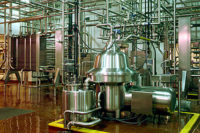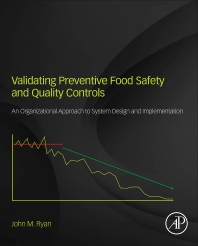Tips for training plant employees

Effective training of plant and quality assurance personnel is essential to achieving quality and food safety standards. The training should involve both technical and practical applications of the process. In addition, it must involve all employees, especially Bubba and his counterparts — Junior, Leroy, “They” and “Supposed To.”
Who is Bubba? He is usually a long-term, dependable and loyal employee who has endured many operational and management changes. He or one of his counterparts works on the line in almost every dairy plant in the United States. Bubba knows what is being done, but he may not understand how it should be done or the impact the process could have on quality or food safety.
In that light, I offer these recommendations for improving training, quality and food safety.
• Develop complete, but simple, standard operating procedures (SOPs) for all critical processes and sanitation standard operating procedures (SSOPs) for cleaning and sanitizing of all equipment and environmental areas. Review the procedures with Bubba and make certain that employees responsible for performing the various jobs understand the procedures. Additionally, supervision must follow up to ensure that shortcuts are not being taken. In other words, you must “Inspect What You Expect.”
• Remember that cleaning and sanitizing is the first step in dairy processing. Unfortunately, this crucial activity is often performed on the graveyard or third shift. Bubba’s co-workers “They” and “Supposed To” are frequently involved when sanitation procedures are being performed. Who is supervising this critical step of the operation?
• Effective training of the sanitation crew is an absolute requirement for ensuring quality and food safety. This means that all employees involved in the process must be properly trained, including the sanitation supervisor or manager.
• New employees or employees assigned to new tasks must be fully trained. Management must ensure they are capable of performing at an acceptable level before they are given full responsibility for the job. The practice of having a replacement employee trained by the employee who has been doing the job often results in bad or inadequate practices being passed on to the new employee.
• Use laboratory results to evaluate and improve the effectiveness of the sanitation program. Plants that have excellent quality products are less likely to encounter food-safety issues. An excellent example of this relationship would be the shelf-life of fluid milk. If fluid milk products are kept for 14 to 18 days at 45°F, the chances for microbial food-safety issues are minimal. If laboratory results are to be useful to the sanitation crew, the right tests must be performed, results must be available on a timely basis and Bubba must understand the significance of the results.
Unfortunately, many consumers and companies are relying upon Food & Drug Administration regulatory inspections and third-party audits to protect food safety. These are simply oversight inspections that are performed infrequently throughout the year. Most food processing plants operate five or six days every week. Therefore, quality and food safety are dependent upon the employees doing the job. If they are not properly trained and supervised, failures will continue to occur. Simply stated, quality and food safety are tied to the commitment and performance of the employees – starting with management.
Bubba has heard of most of the high-powered training programs that are “supposed to” fix all plant problems, but he may not have been actively involved, understood or bought into the system. Management must communicate with Bubba. As a long-term client and friend told me more than 25 years ago, “Talking to Bubba is not enough. You must talk to him long and often enough.” Bubba will not tell you everything in one short conversation.
Any training program that does not involve Bubba and his counterparts Junior, Leroy, “They” and “Supposed To” will not be effective on a long-term basis. n
Looking for a reprint of this article?
From high-res PDFs to custom plaques, order your copy today!








